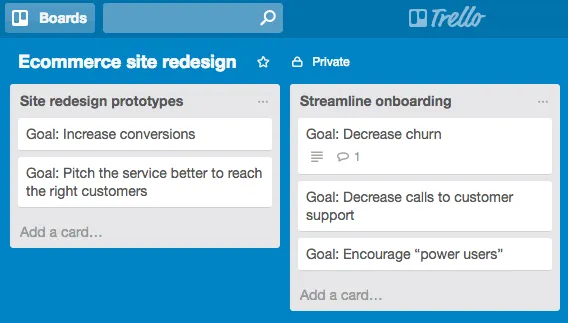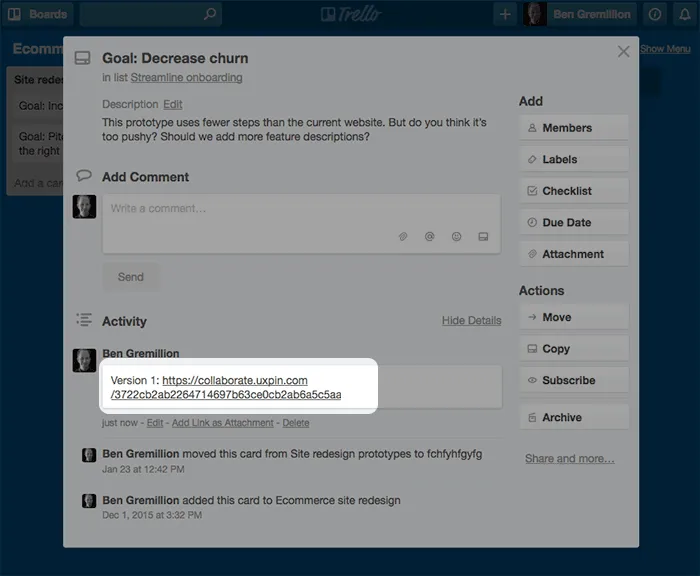Trello, the popular workflow and project management app, is a great way to stay on top of both tasks and conversations. But it’s not ideal for leaving feedback on web and app prototypes. Meanwhile UXPin lets stakeholders leave specific notes on prototypes, plus code and use-case notes for developers.
Luckily using Trello and UXPin is as simple as copy/paste. Here’s a great strategy to use Trello and UXPin together.
1. Make a card for each of your project’s goals.
We start with goals to keep each prototype on track. Without goals, we can’t gauge a prototype’s success — we’re designing in a vacuum.

2. Add a live prototype link to the first comment.
Copy the live profile’s URL from your browser window. Recipients of the URL can view and comment on the prototype, even if they don’t have a UXPin account.

3. In the cards’ descriptions, ask stakeholders for feedback.
We recommend asking specific questions based on the goals. “What do you think?” is good, but questions like “We want to accomplish X, how can we improve?” gives commenters guidance on what to watch for. Specific questions also underscore at what level of fidelity the prototype is; if you want feedback on the concept, not the colors, for example, then “Does the user flow work?” keeps people on track.
4. Set a deadline for giving feedback. Upon reaching that deadline, move it to a “conversation” list.
Designers iterate their work over time. Keeping a list of prototypes to discuss is a grew way to separate old versions from feedback in progress. The key is to set a deadline: give people, say, a week to comment, then move on. That often inspires people to avoid procrastinating while keeping the project from stagnating.
5. Take action
Next time your team meets to discuss the project, you’ll have everyone’s feedback in a central place — UXPin — organized by its status in Trello lists. All this keeps your team in the same conversation, complete with hi-fi visuals on which people can leave specific comments.
Tips and best practice
While there are many ways to use Trello and UXPin in tandem, we’ve discovered several techniques to make the process work especially well.
Think in terms of flows, not pages. How will users get from here to there? What compels them to move along a certain path?
Ask for specific feedback. Beyond “what do you think?”, seek an angle. For example: “we’re going for X which will benefit the Y goal. Do you think this prototype fits the bill? If not, what would improve it?”
Remember that prototypes adapt. Changes made to UXPin projects take effect immediately, so keep in mind that iterations — like design conversations — evolve over time.
Trello provides the process. UXPin provides the on-point feedback. Together they’re a great team for collaborative teamwork.


